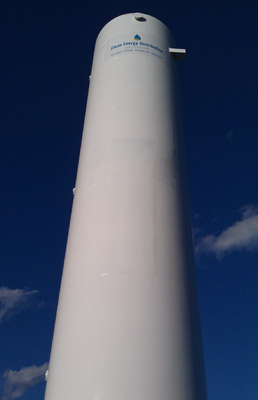Liquefied Natural Gas

What is LNG?
LNG - Liquefied Natural Gas Production
LNG is natural gas, purified into almost 100% pure methane and cooled to below its boiling point (-162 degrees centigrade). At this temperature the gas condenses into a liquid taking up 600 times less space. This makes transporting natural gas practical where no pipeline exists, e.g. in remote areas or across oceans.
LNG - Transport and Storage
LNG is transported and stored at relatively low pressures in vacuum insulated steel storage tanks. These tanks work like large thermos flasks - a stainless steel liner holds the LNG, while a second skin formes an insulating vacuum space around the container. This allows the LNG to be stored or transported long distances maintaining its low temperature and liquid state.
Converting LNG back to Natural Gas
Most customers require the LNG to be converted back into a gas so that it can be used in standard natural gas burning boilers, dryers, heaters, engines and generators. This is achieved simply by allowing the LNG to warm up in specialised LNG vapourisers that use warmth from the surrounding air to heat the liquid to it's boiling point.
These vapourisers usually require no power or additional heat and resemble large radiators. Once regasified the LNG can be delivered through traditional natural gas pipework.
The Cleanest Fossil Fuel
Natural gas is one of the safest and cleanest fuels available. It emits less pollution than other fossil fuels. When natural gas is burned, it produces mostly carbon dioxide and water vapour – the same substances emitted when you exhale. Compared with other fossil fuels, natural gas emits the least amount of carbon dioxide into the air when combusted – making natural gas the cleanest burning fossil fuel available.




